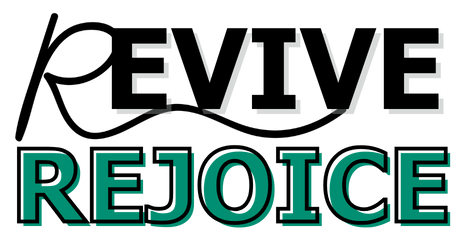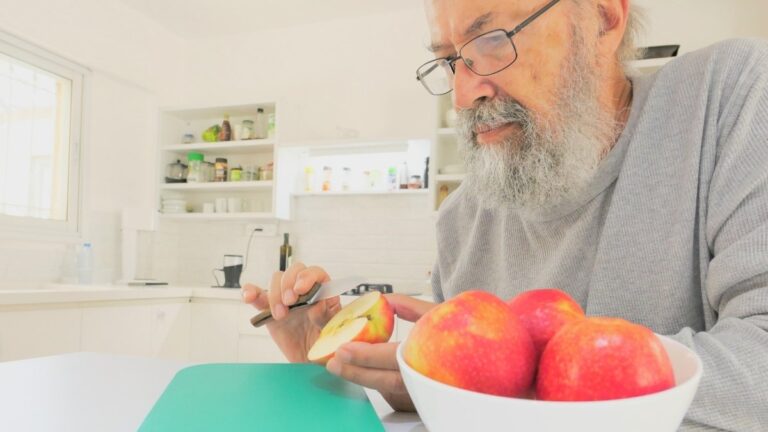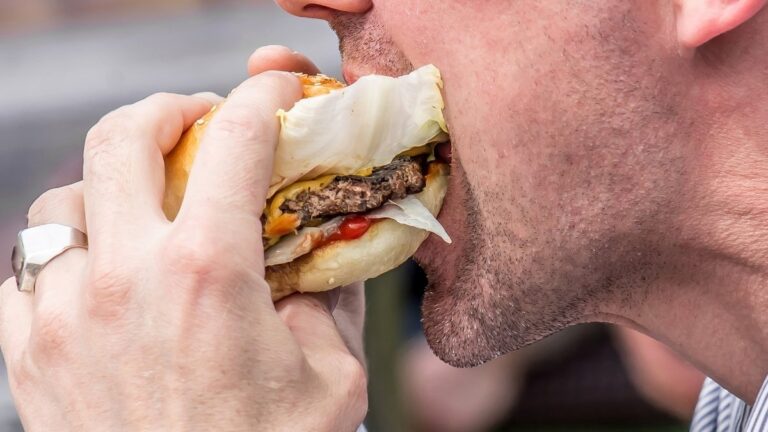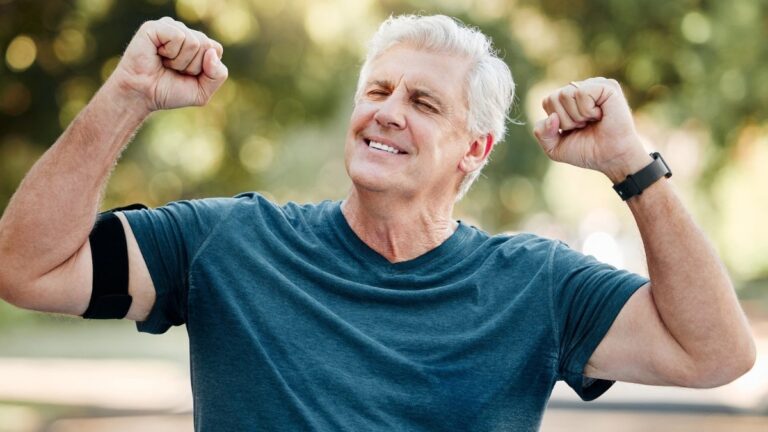The Ultimate Grocery List for Strong Bones You Absolutely Need These 15 Foods in Your Kitchen
By 2025, osteoporosis-related fractures cost the U.S. healthcare system $25.3 billion annually, affecting over 54 million Americans over age 50. Your bones are living tissue that constantly rebuilds itself, but after age 30, bone loss can outpace bone formation.
Research shows that dietary intake plays a pivotal role in bone health an Frontiers | Is bone mineral density in middle-aged and elderly individuals associated with their dietary patterns? A study based on NHANESd is a factor that can be readily modified.
While calcium and vitamin D dominate bone health conversations, adequate intake of essential nutrients, including protein, calcium, vitamin D, vitamin K, magnesium, and phosphorus, is essential for maintaining bone health and reducing the risk of low bone mineral density.
This evidence-based guide reveals 15 scientifically-proven foods that strengthen bones, increase bone density, and reduce fracture risk—plus exactly how much to eat for maximum benefit in your osteoporosis prevention plan.
Build Stronger Bones: Your Daily Food Guide
15 Foods That Boost Bone Density: Your Guide to Stronger Bones
Your bones are getting weaker right now. And you might not even feel it happening.
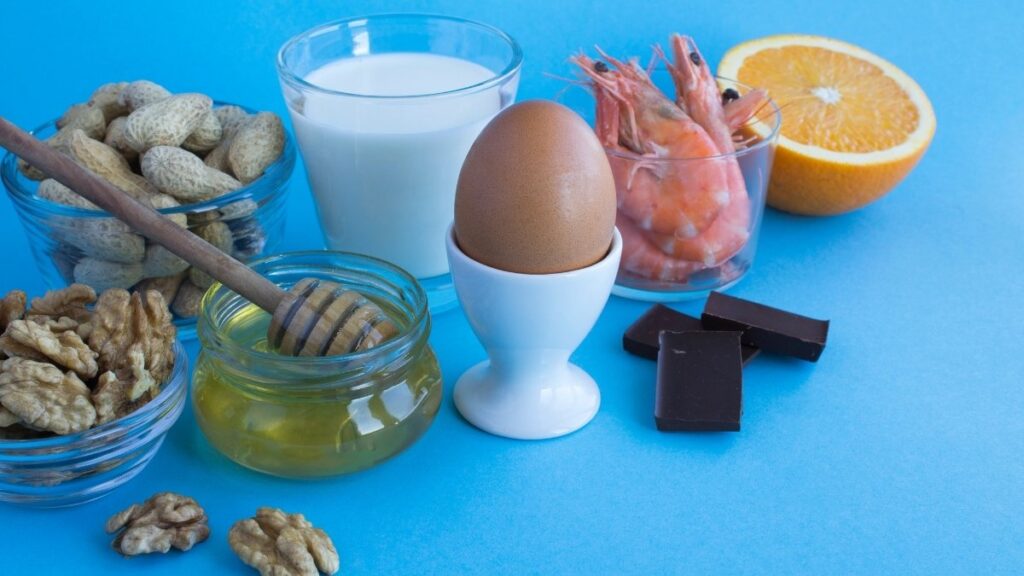
Here’s what’s scary: In the United States, osteoporosis causes about 2 million fractures every year. The cost? It’s expected to hit $25.3 billion by 2025. But here’s what most people miss—bone density among U.S. adults has been dropping for the past decade.
You can stop this. Better yet, you can reverse it. The secret? It’s sitting in your kitchen right now.
Why Your Bone Density Matters More Than You Think
Your bones aren’t solid. They’re alive.
Every single day, your body breaks down old bone and builds new bone. This process never stops. When you’re young, you build more than you lose. After 30? The balance shifts.
Bone mineral density (BMD) tells you how much mineral is packed into your bones. Higher density means stronger bones. Lower density means fractures are coming.
Here’s what controls your BMD:
- What you eat (the biggest factor you can control)
- Your hormones
- Your immune system
- Your lifestyle choices
- Your genes
Right now, 54 million Americans over 50 have weak bones. Most don’t know it yet.
Prevention is everything. Why? Because building bone is way easier than fixing broken bone. Think of it like saving money—start early, and you’re set. Wait until you’re broke, and you’re playing catch-up.
The good news? The foods you’ll learn about in this guide give your bones exactly what they need. No pills required.
1. Low-Fat Dairy Products: Your Calcium Powerhouse
Want the easiest way to hit your calcium goals? Grab a glass of milk.
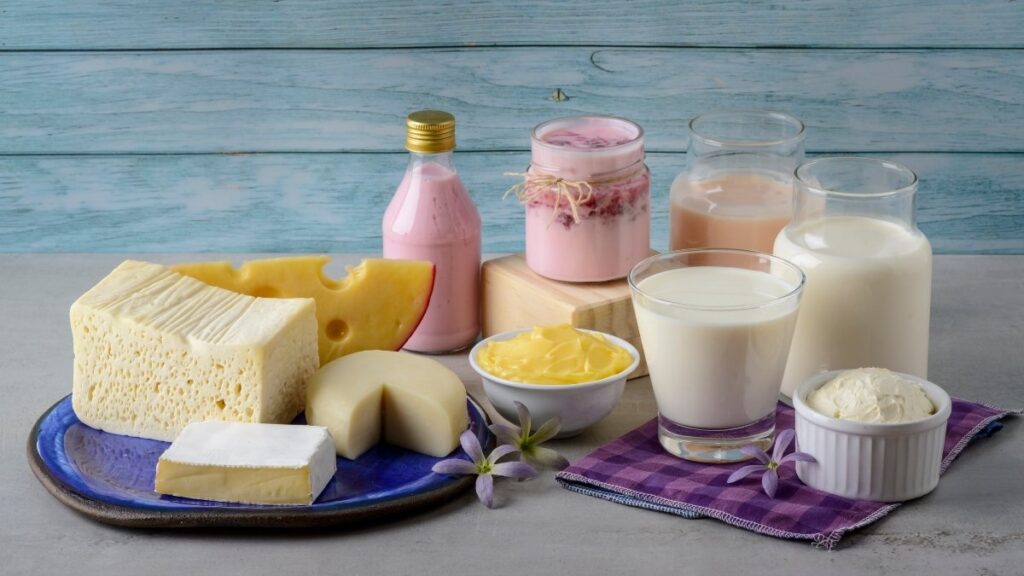
One cup of milk gives you 300mg of calcium. That’s 30% of what you need each day. And your body absorbs it better than most other sources.
But here’s what makes dairy special: most products are fortified with vitamin D. Your bones need both calcium and vitamin D to work properly. Calcium builds the structure. Vitamin D helps your body actually use it.
Here’s how much you need: 3 servings daily.
Greek yogurt packs even more punch. You get protein plus calcium in one container. The protein supports your bone structure from the inside out.
Aged cheeses concentrate calcium as they dry. Parmesan, cheddar, and Swiss are your best bets.
Can’t handle lactose? No problem. Lactose-free milk has the same calcium content. Your bones won’t know the difference.
Quick numbers to remember:
- 1 cup milk = 300mg calcium
- 6 oz Greek yogurt = 200mg calcium
- 1.5 oz cheddar = 300mg calcium
2. Fatty Fish: The Vitamin D Solution
Your body can’t make strong bones without vitamin D. And most people don’t get enough.
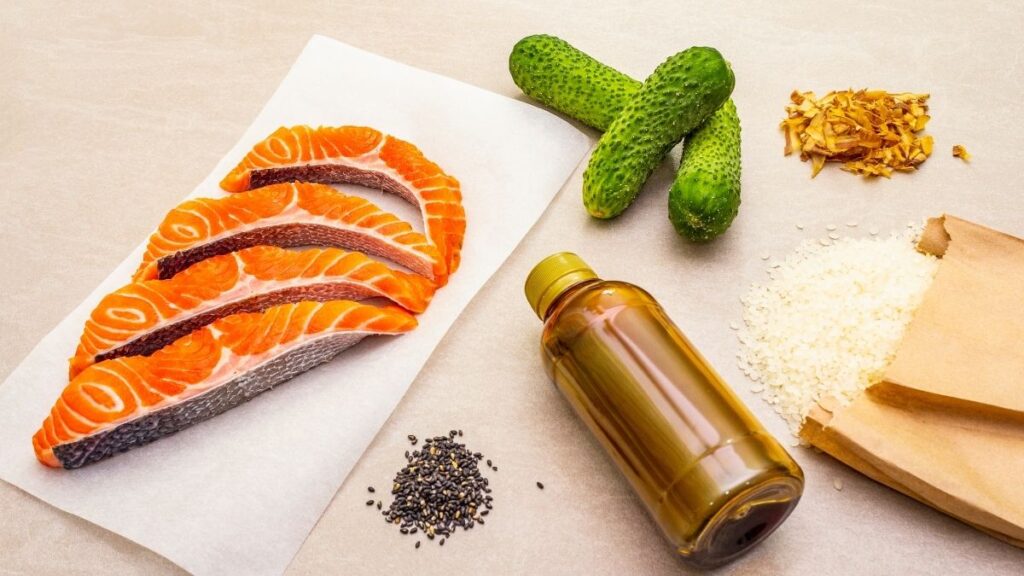
Fatty fish solve this problem fast. Salmon, mackerel, and tuna are packed with it. Three ounces of salmon gives you 450 IU of vitamin D.
But here’s the bonus: canned sardines and salmon with bones give you calcium too. Those tiny bones you can eat? They’re loaded with the exact mineral your bones need.
The inflammation connection: Omega-3 fatty acids in fatty fish reduce inflammation throughout your body. Less inflammation means your bones can focus on building instead of defending.
How to eat them: Aim for 3-4 ounces, 2-3 times per week.
Wild-caught fish typically have more omega-3s than farmed. But farmed is still way better than nothing.
Your best choices:
- 3 oz canned sardines with bones = 325mg calcium (plus vitamin D and omega-3s)
- 3 oz salmon = 450 IU vitamin D (plus omega-3s)
- 3 oz mackerel = vitamin D and heart-healthy fats
Pro tip: Keep canned sardines in your pantry. They’re cheap, last forever, and ready to eat.
3. Dark Leafy Greens: Plant-Based Calcium That Works
Think you need dairy for calcium? Think again.
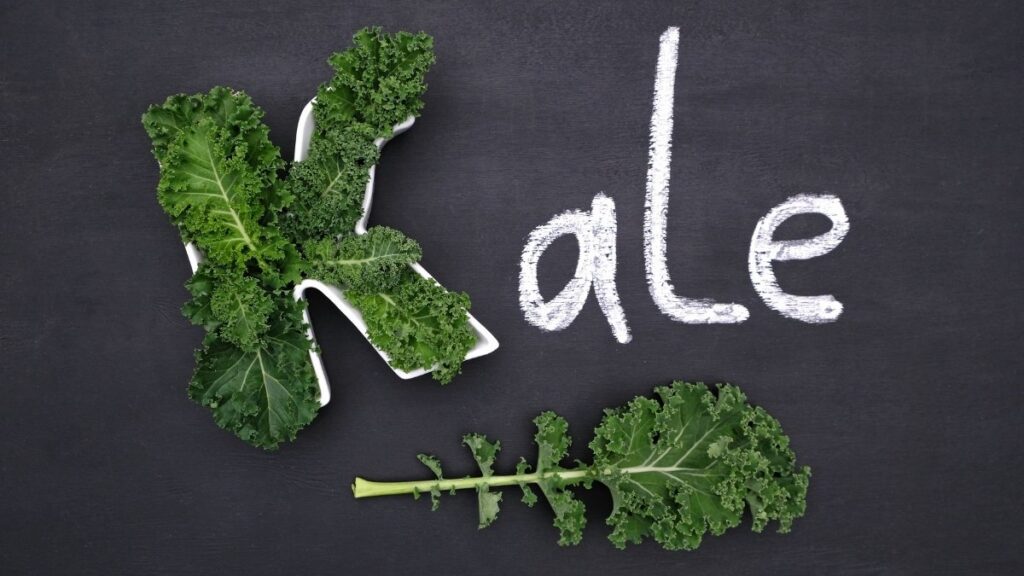
Collard greens, turnip greens, kale, and mustard greens pack serious calcium. One cup of cooked collards gives you 266mg of calcium. That’s almost as much as a glass of milk.
But these greens do something dairy can’t. They give you vitamin K—lots of it.
Why vitamin K matters: It activates proteins that help your bones form properly. Without enough vitamin K, your bones can’t use calcium effectively. It’s like having bricks but no cement.
Here’s a stat that should worry you: Women who ate less than 109 micrograms of vitamin K daily were more likely to break a hip.
The best part? These greens are low in calories and packed with nutrients. You can eat 1-2 cups cooked daily without worrying about your waistline.
How to boost absorption: Cook your greens with a little olive oil or butter. The fat helps your body absorb the nutrients better.
Your calcium leaders:
- 1 cup cooked collards = 266mg calcium
- 1 cup cooked turnip greens = 197mg calcium
- 1 cup cooked kale = 94mg calcium (plus converts to vitamin K2)
4. Prunes: The Bone-Saving Fruit You’re Ignoring
This sounds weird. But prunes might be the most powerful bone food you’ve never tried.
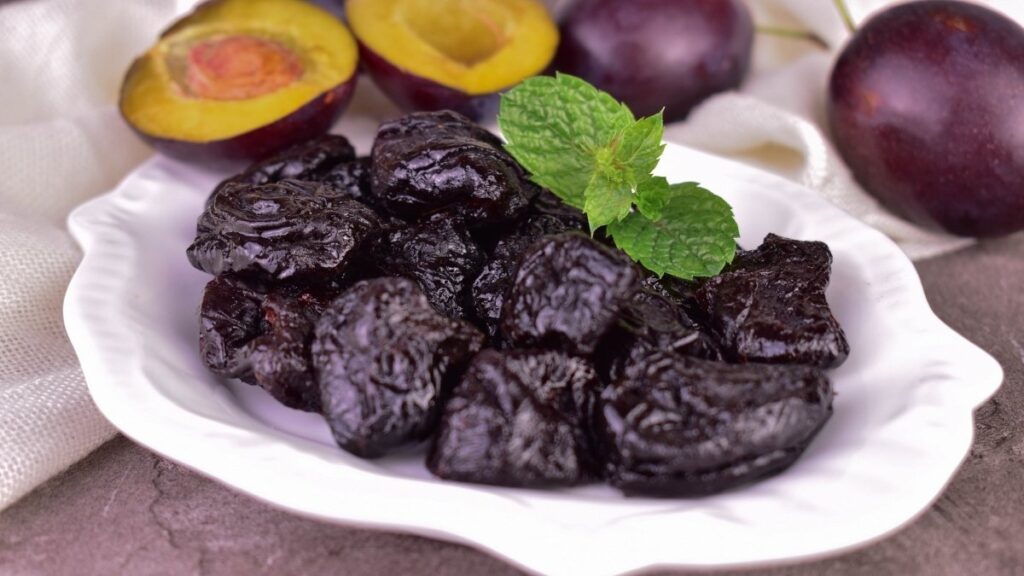
Research shows that eating prunes daily slows down age-related bone loss. Even better? It reduces your fracture risk.
Here’s the proof: In a 12-month study, women who ate 50g of prunes daily (about 5-6 prunes) maintained their hip bone density. The control group? They lost 1.1% of their bone density.
That might not sound huge. But over 10 years, that’s the difference between strong bones and a broken hip.
Why prunes work:
- Rich in potassium (helps you keep calcium)
- Loaded with vitamin K (activates bone proteins)
- Full of polyphenols (fights inflammation)
- Natural anti-inflammatory properties
Women who ate 4-6 prunes daily maintained bone density and bone strength. They even preserved their bone structure, especially in cortical bone (the hard outer layer).
How much should you eat? Start with 5-6 prunes (50g) daily. Some studies used 9-10 prunes (100g) for even better results.
Calorie count: 100g = about 240 calories. Not nothing, but worth it for your bones.
Ways to eat them:
- Plain as a snack
- Chopped into morning cereal
- Diced into salads
- Blended into smoothies
5. Fortified Foods: When Nature Needs a Boost
Can’t or won’t eat dairy? Fortified foods have your back.
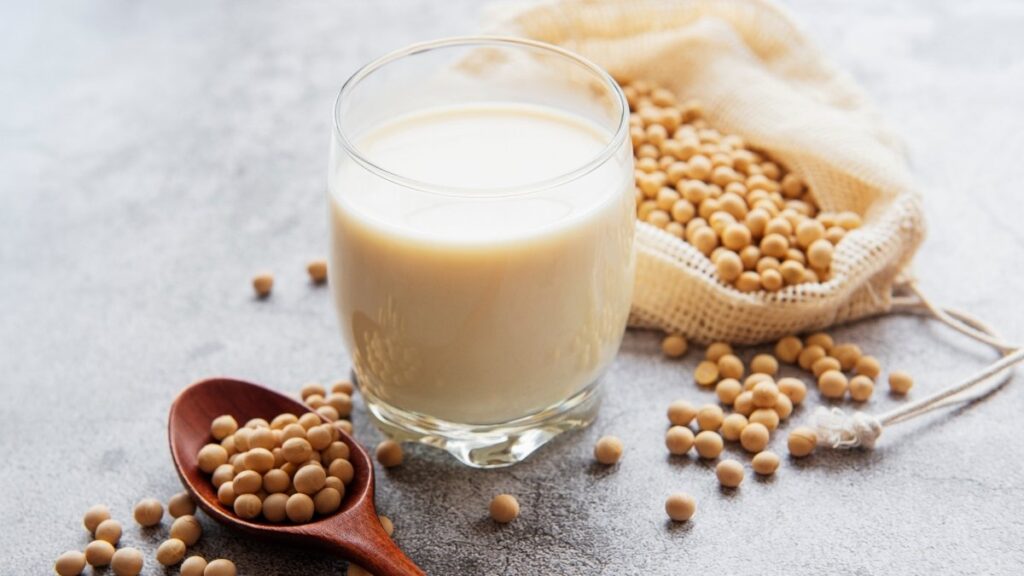
Food companies add calcium and vitamin D to all kinds of products now. Orange juice, cereals, and plant milks often match or beat regular milk for calcium content.
One cup of fortified orange juice gives you 300mg of calcium. That’s the same as cow’s milk.
The plant milk guide:
- Fortified soy milk = 300-450mg calcium per cup
- Fortified almond milk = 300-450mg calcium per cup
- Fortified oat milk = 300-350mg calcium per cup
Critical rule: Check the label. Not all brands fortify their products. And fortification levels vary wildly.
Fortified cereals can pack anywhere from 100mg to 1000mg of calcium per serving. Some give you 100% of your daily calcium in one bowl.
Best for: People who are lactose intolerant, vegan, or just don’t like dairy.
One warning: Fortified foods work best when paired with whole foods. Don’t rely on them alone. Your body prefers getting nutrients from real food sources when possible.
6. Nuts and Seeds: Small Foods, Big Impact
Your bones need more than just calcium. They need magnesium too.
Magnesium supports higher bone density in your hips and femoral neck. And nuts and seeds are loaded with it.
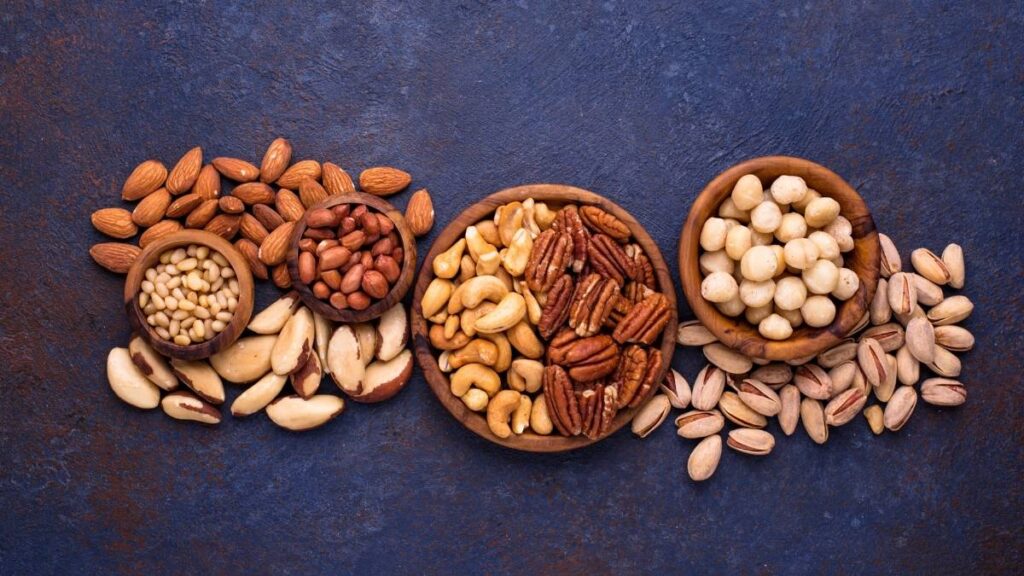
One-quarter cup of almonds gives you 95mg of calcium plus 80mg of magnesium. That’s a powerful combination for your bones.
Why magnesium matters: It helps convert vitamin D into its active form. Without enough magnesium, your body can’t use vitamin D properly. All that calcium absorption goes to waste.
Sesame seeds are the calcium champions of the nut and seed world. One tablespoon of tahini (sesame paste) packs 64mg of calcium.
The protein and healthy fat bonus: Nuts and seeds provide protein your bones need for structure. The healthy fats help you absorb fat-soluble vitamins like D and K.
Perfect serving size: 1/4 cup (about 1 ounce) daily. That’s roughly a small handful.
Your best picks:
- Almonds = calcium + magnesium + vitamin E
- Sesame seeds/tahini = highest calcium content
- Chia seeds = calcium + omega-3s + fiber
Portability win: Throw a bag of almonds in your car or desk. You’ve got a bone-building snack ready anytime.
7. Beans and Legumes: Budget-Friendly Bone Builders
You don’t need expensive supplements or fancy foods to build strong bones.
Beans and legumes give you plant-based protein, calcium, magnesium, and fiber. All for pocket change.
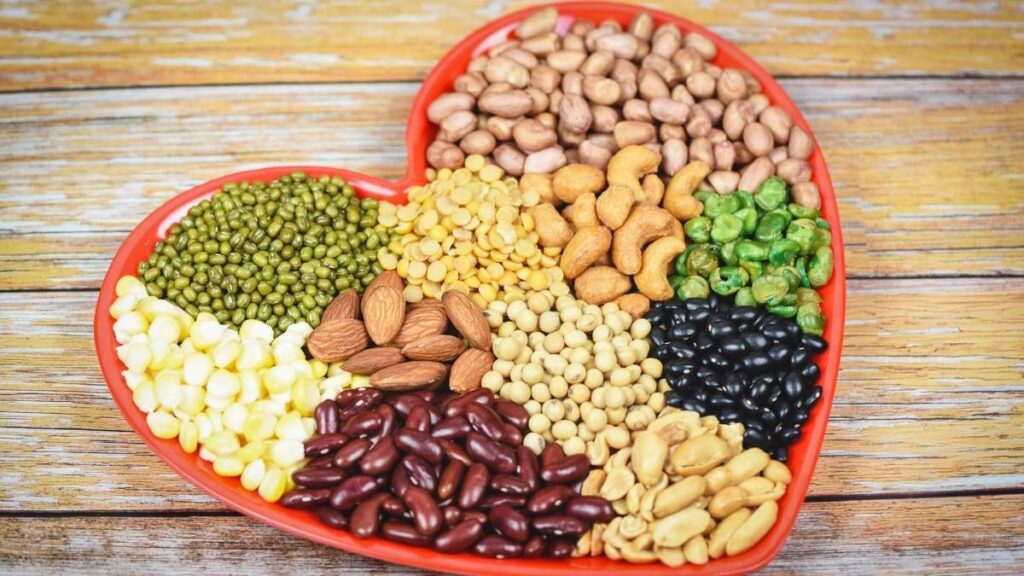
One cup of white beans delivers 161mg of calcium. Black beans give you 120mg of magnesium per cup. Lentils pack both protein and minerals.
The protein connection: Protein affects bone health differently across age groups. But one thing is clear—your bones need adequate protein to maintain their structure.
Why protein matters: Bones aren’t just minerals. They’re made of collagen (a protein) packed with minerals. Without enough protein, your bone structure weakens even if you get enough calcium.
Beans solve multiple problems at once. They give you the protein, minerals, and fiber your body needs. And they work in almost any recipe.
Budget reality: A bag of dried beans costs a couple bucks and makes multiple meals. Compare that to supplements or expensive bone drugs.
Easy ways to eat more:
- Add white beans to soup
- Make black bean tacos
- Toss chickpeas in salads
- Cook lentil curry
- Mash pinto beans as a side dish
8. Broccoli: The Three-Way Bone Builder
Broccoli gives your bones three things they desperately need: calcium, vitamin K, and vitamin C.
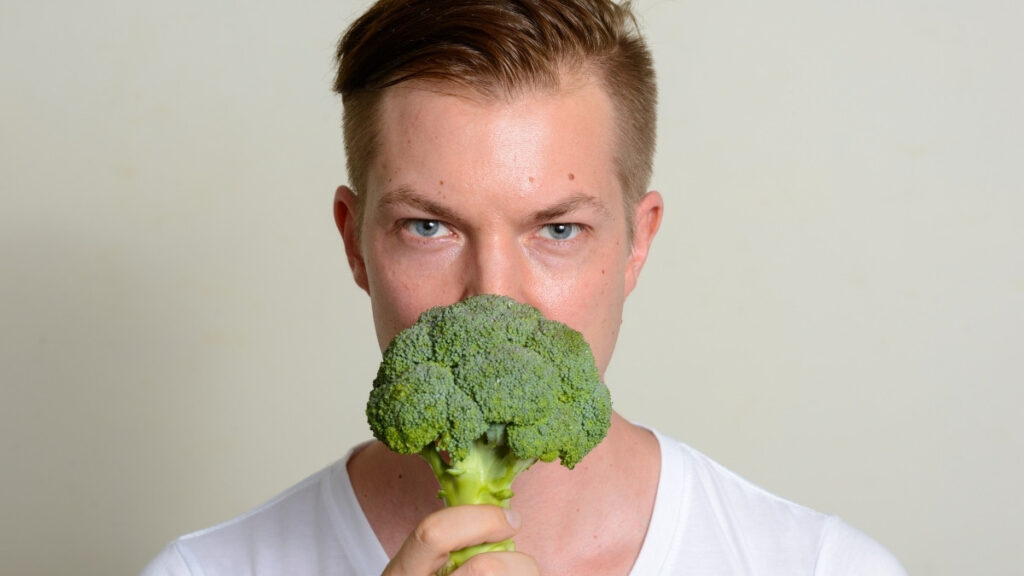
One cup of cooked broccoli delivers 62mg of calcium and 101mg of vitamin C. That vitamin C is critical.
Why vitamin C matters: Your bones are wrapped in collagen. Vitamin C is essential for producing that collagen matrix. Without enough vitamin C, your bone structure weakens.
Vitamin K helps activate bone-building proteins. And the calcium? That’s the mineral building block itself.
The calorie advantage: One cup of broccoli has about 55 calories. You can eat huge portions without gaining weight.
Brussels sprouts work similarly. They give you vitamin K and vitamin C in a crunchy package.
Bok choy is the Asian alternative. It offers calcium plus vitamin A for good measure.
How much to eat: Aim for 1-2 cups daily. You can eat it raw or cooked—both work.
Preparation tip: Light steaming preserves more nutrients than boiling. Roasting with olive oil makes it taste better and helps nutrient absorption.
9. Sweet Potatoes: The Unexpected Bone Food
Nobody thinks “bone health” when they see a sweet potato. They should.
One medium sweet potato gives you 542mg of potassium and 31mg of magnesium. Both minerals support bone metabolism.
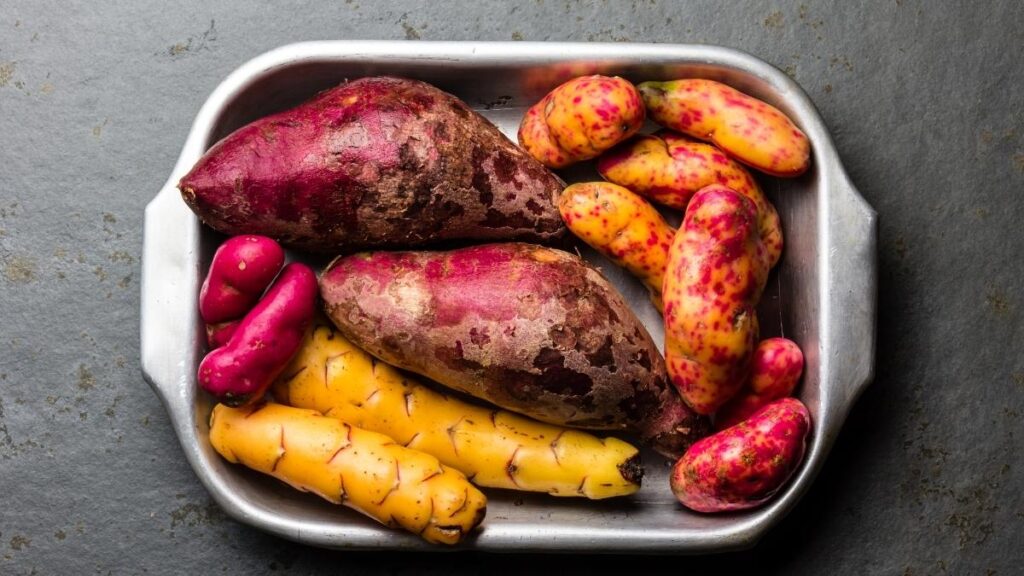
How potassium protects bones: Your body constantly balances acids and bases. When your diet is too acidic, your body pulls calcium from your bones to neutralize it. Potassium helps prevent this calcium theft.
Magnesium works behind the scenes to activate vitamin D and support bone density.
Sweet potatoes also give you vitamin A and fiber. The vitamin A supports bone cell function. The fiber helps your gut absorb nutrients better.
Color matters: Orange sweet potatoes have the most vitamin A. Purple varieties offer antioxidants that fight inflammation.
Serving size: One medium sweet potato (4-5 ounces) is perfect.
Easy prep methods:
- Bake whole at 400°F for 45 minutes
- Cube and roast with olive oil
- Mash as a side dish
- Slice thin and bake as “fries”
10. Eggs: Nature’s Vitamin D Package
Vitamin D is hard to find in food. Most of what you need comes from sun exposure. But eggs are one of the few natural food sources.
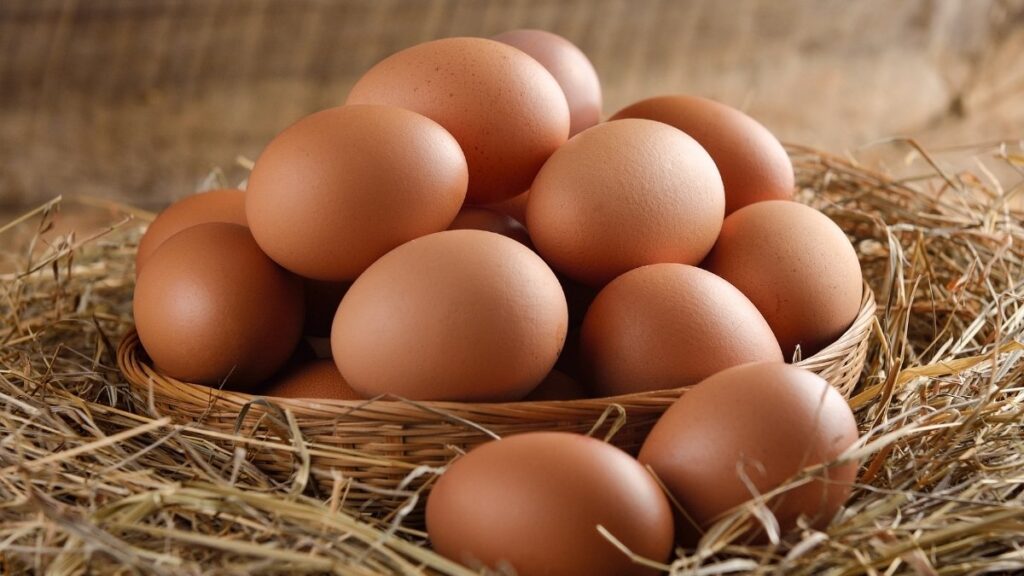
One large egg yolk contains 37 IU of vitamin D. That’s not a ton, but it adds up.
The pasture-raised difference: Chickens that live outside and eat bugs produce eggs with 3-4 times more vitamin D than conventional eggs. Worth the extra dollar.
Eggs also give you high-quality protein with all essential amino acids. Your bones need this complete protein to maintain structure.
The vitamin K2 bonus: Egg yolks (especially from pasture-raised chickens) contain vitamin K2. This helps direct calcium into your bones instead of your arteries.
How many to eat: 1-2 eggs daily is safe for most people.
Important note: The yolk contains most nutrients. Don’t waste it. Egg white omelets are missing the bone-building vitamins.
Quick meal ideas:
- Hard-boil a dozen for grab-and-go protein
- Scramble with veggies for breakfast
- Add to salads for extra protein
- Make frittatas with leftover vegetables
11. Citrus Fruits: The Collagen Connection
Your bones need collagen to stay flexible and strong. And collagen needs vitamin C to form properly.
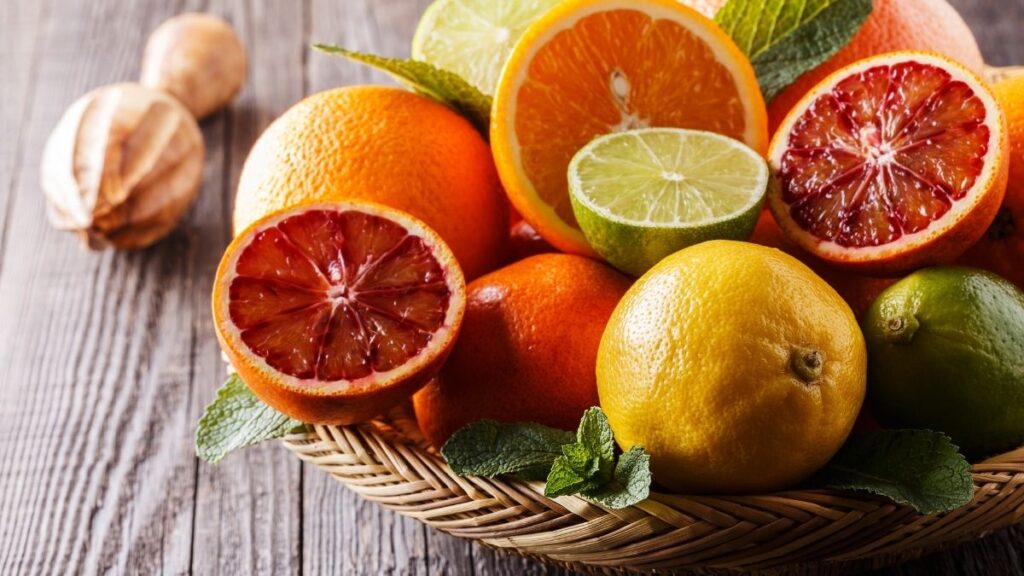
Research shows that people who eat more vitamin C have higher bone density in their hips and spine.
One medium orange gives you 70mg of vitamin C plus 237mg of potassium. That’s a double bone benefit in one fruit.
How vitamin C builds bones: It helps create collagen fibers in your bone matrix. Without enough vitamin C, bones become brittle and break easily.
Grapefruit works too. So do papaya and pineapple. All are loaded with vitamin C.
Fresh juice vs whole fruit: Whole fruit is better. You get the fiber, which helps control blood sugar. But fresh-squeezed juice still provides the vitamin C your bones need.
Daily target: 1-2 citrus fruits daily gives you plenty of vitamin C.
Pro tip: Eat citrus with meals that contain iron-rich foods. Vitamin C helps your body absorb iron, which supports healthy blood that feeds your bones.
12. Tomatoes: The Potassium Powerhouse
Tomatoes might not seem special. But they’re quietly protecting your bones.
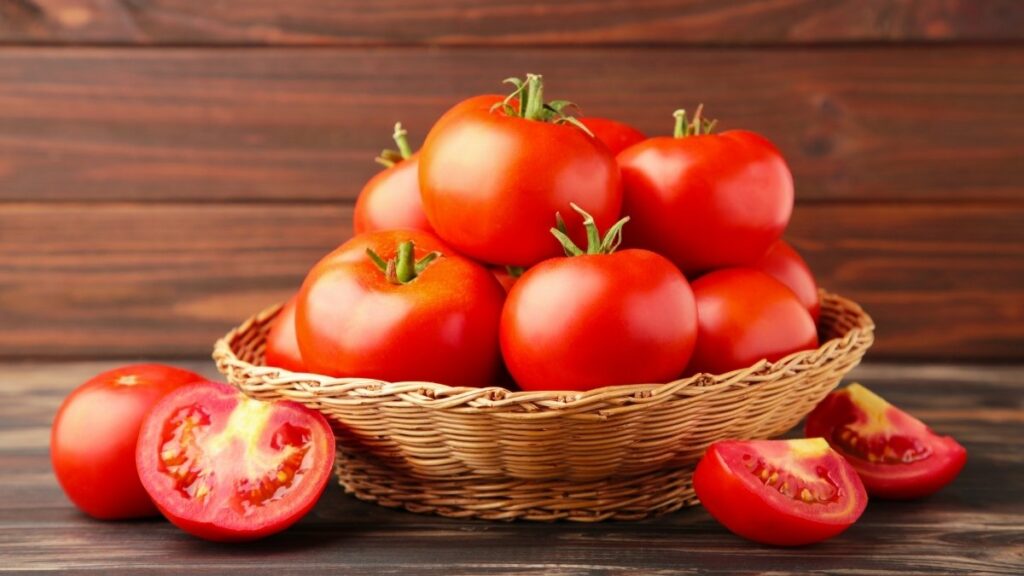
Half a cup of tomato sauce delivers 405mg of potassium. One cup of tomato juice? 556mg of potassium.
That potassium prevents your body from stealing calcium from your bones to balance acids.
The lycopene bonus: Tomatoes are rich in lycopene, a powerful antioxidant. It fights inflammation that can damage bones over time.
Cooking makes them better: Heat breaks down tomato cell walls and makes lycopene more available to your body. Cooked tomatoes are more beneficial than raw for bone health.
Easy ways to eat more:
- Use tomato sauce on pasta
- Drink tomato juice at breakfast
- Add sun-dried tomatoes to salads (they’re super concentrated)
- Make tomato-based soups
- Roast cherry tomatoes with olive oil
Year-round availability: Fresh tomatoes in winter taste like cardboard. But canned tomatoes are picked at peak ripeness and often contain more nutrients than off-season fresh ones.
13. Fermented Foods: The Gut-Bone Connection
Here’s something most people miss: your gut health affects your bone health.
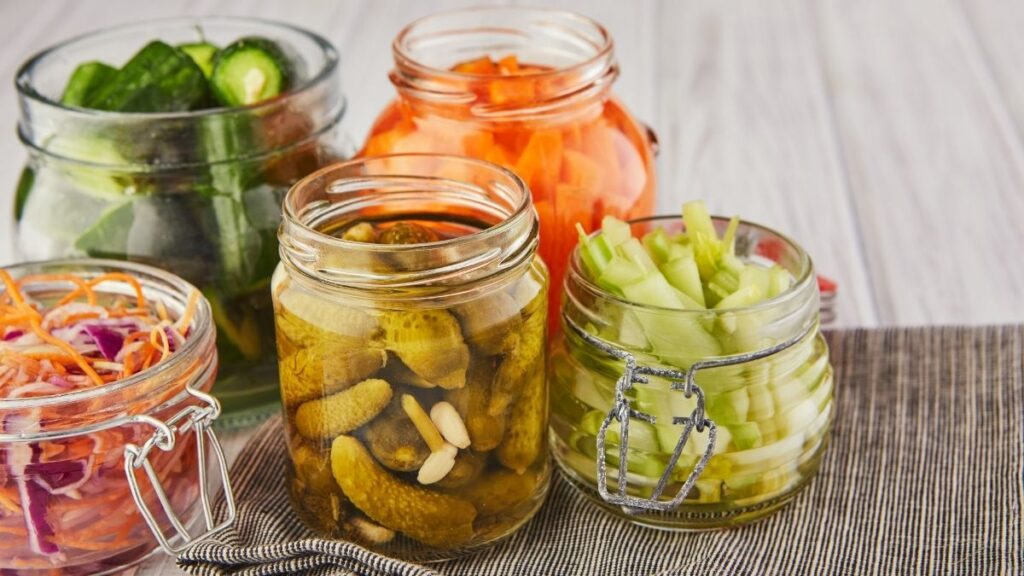
Fermented foods support the good bacteria in your gut. These bacteria help you absorb nutrients better, including calcium and magnesium.
Natto is the superstar: This Japanese fermented soybean food is loaded with vitamin K2. It’s one of the richest food sources on the planet.
Why K2 matters: Vitamin K2 (specifically menaquinone-7) activates proteins that pull calcium into your bones. Studies show it helps prevent bone loss in postmenopausal women.
Natto tastes weird if you’re not used to it. It’s sticky, stringy, and has a strong flavor. But the bone benefits are incredible.
Can’t handle natto? Try sauerkraut or kimchi instead. They provide probiotics and some vitamin K2, just not as much.
Serving size: 1-2 tablespoons of natto or 1/2 cup of sauerkraut daily.
How to eat natto:
- Mix with rice and soy sauce
- Add to miso soup
- Stir into scrambled eggs
- Eat plain if you’re brave
14. Lean Meats and Poultry: The Protein Foundation
Your bones are made of collagen (a protein) filled with minerals. Without adequate protein, the whole structure weakens.
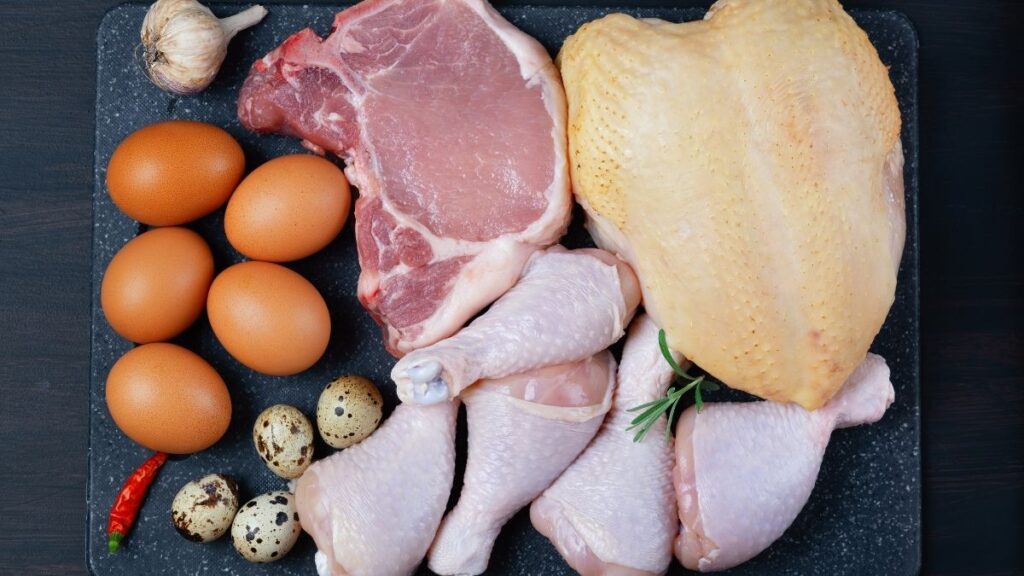
Lean meats and poultry give you complete amino acids—all the building blocks your body needs to make bone protein.
Three ounces of chicken breast provides 26g of protein plus 196mg of phosphorus. Both are essential for bone health.
The protein-bone relationship: Studies show that protein intake affects bone density, though the effect varies by age and gender. What’s clear is that you need enough protein to maintain bone mass.
Turkey gives you protein plus B vitamins that support metabolism. Lean beef adds protein plus zinc, which helps with bone formation.
How much to eat: 3-4 ounces of lean meat or poultry, 2-3 times weekly.
Choose wisely: Pick lean cuts to reduce saturated fat. Chicken breast, turkey breast, and lean cuts of beef or pork work best.
Balance is key: You need protein, but too much can increase calcium loss in urine. Stick to moderate portions and pair with plenty of vegetables.
15. Bananas and Plantains: The Acid Neutralizers
Your body is constantly fighting to maintain pH balance. When your diet is too acidic, your body pulls calcium from bones to neutralize the acid.
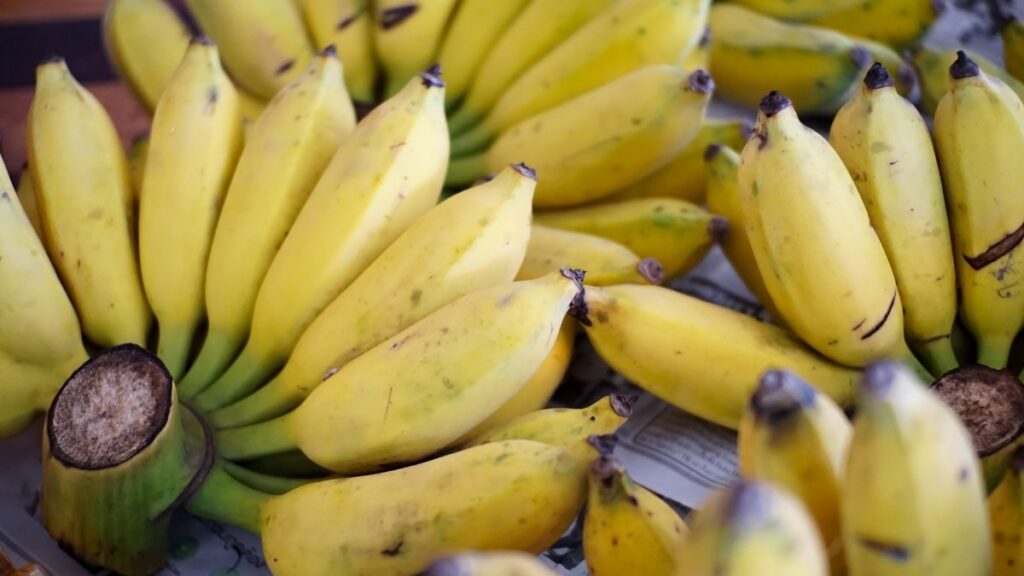
Potassium stops this theft. And bananas are loaded with it.
One medium banana gives you 422mg of potassium plus 32mg of magnesium. Both minerals protect your bones.
Why bananas work: They’re alkaline-forming in your body. This means they help maintain pH balance without stealing calcium from bones.
Plantains are even better if you cook them. One cup of cooked plantains delivers 716mg of potassium.
The convenience factor: Bananas are the ultimate portable snack. Peel and eat. No prep required.
Ripe vs unripe: Riper bananas have more sugar but easier-to-digest carbs. Less ripe bananas have more resistant starch that feeds good gut bacteria.
Both provide prebiotic fiber that supports gut health. And good gut health means better nutrient absorption.
Simple ways to eat more:
- Grab one before or after workouts
- Slice onto oatmeal or cereal
- Blend into smoothies
- Freeze and blend for “nice cream”
How to Combine These Foods for Maximum Results
You don’t need to eat all 15 foods every day. But you should eat several of them daily.
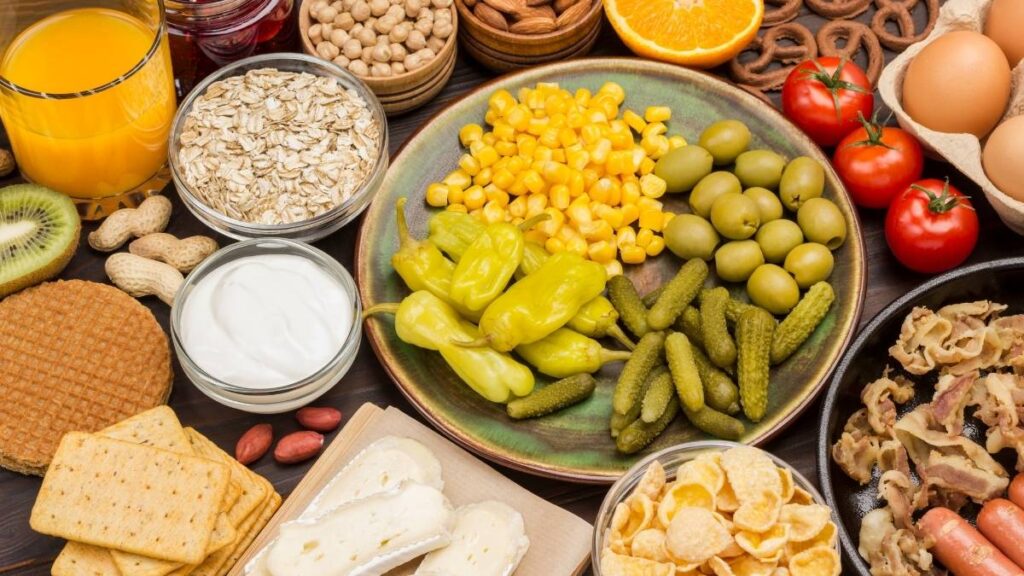
The key is creating eating patterns that give you multiple bone-building nutrients at each meal.
Sample day of bone-building meals:
Breakfast: Greek yogurt with sliced banana and a handful of almonds
- Calcium from yogurt
- Potassium from banana
- Magnesium from almonds
- Protein from yogurt and nuts
Lunch: Salmon salad with kale, tomatoes, and sesame seed dressing
- Vitamin D and omega-3s from salmon
- Calcium and vitamin K from kale
- Potassium from tomatoes
- Calcium from sesame seeds
Dinner: Grilled chicken with roasted broccoli and baked sweet potato
- Protein from chicken
- Calcium and vitamin C from broccoli
- Potassium and magnesium from sweet potato
Snack: 5-6 prunes and a small handful of walnuts
- Polyphenols and vitamin K from prunes
- Omega-3s from walnuts
Timing matters: Your body can only absorb about 500mg of calcium at once. Spread calcium-rich foods throughout the day instead of loading up at one meal.
Synergistic combinations:
- Pair vitamin D foods with calcium foods (your body needs D to absorb calcium)
- Eat vitamin K foods with healthy fats (K is fat-soluble)
- Combine vitamin C foods with iron-rich foods (C helps iron absorption)
What to limit:
- Excessive salt (pulls calcium out through urine)
- Too much caffeine (can interfere with calcium absorption)
- Heavy alcohol use (damages bone-building cells)
Start small: Pick 2-3 new foods from this list. Add them to your routine this week. Next week, add 2-3 more. Small changes stick better than trying to overhaul everything at once.
Your Bones Are Counting On You
Your bones need more than just calcium. They need protein, calcium, vitamin D, vitamin K, magnesium, and phosphorus working together.
These 15 foods give you everything your bones need in forms your body actually uses.
You don’t need expensive supplements. You don’t need complicated meal plans. You just need real, whole foods that nature designed to build strong bones.
The bottom line: Bone loss is not inevitable. You can maintain and even improve your bone density at any age.
Start today. Add 2-3 of these foods to your daily routine. Maybe it’s a handful of almonds with breakfast. Or 5 prunes as an afternoon snack. Or switching to Greek yogurt.
Small, consistent changes compound over time. In six months, you’ll have stronger bones. In a year, you’ll have built a foundation that supports you for decades to come.
Your 80-year-old self will thank you.

